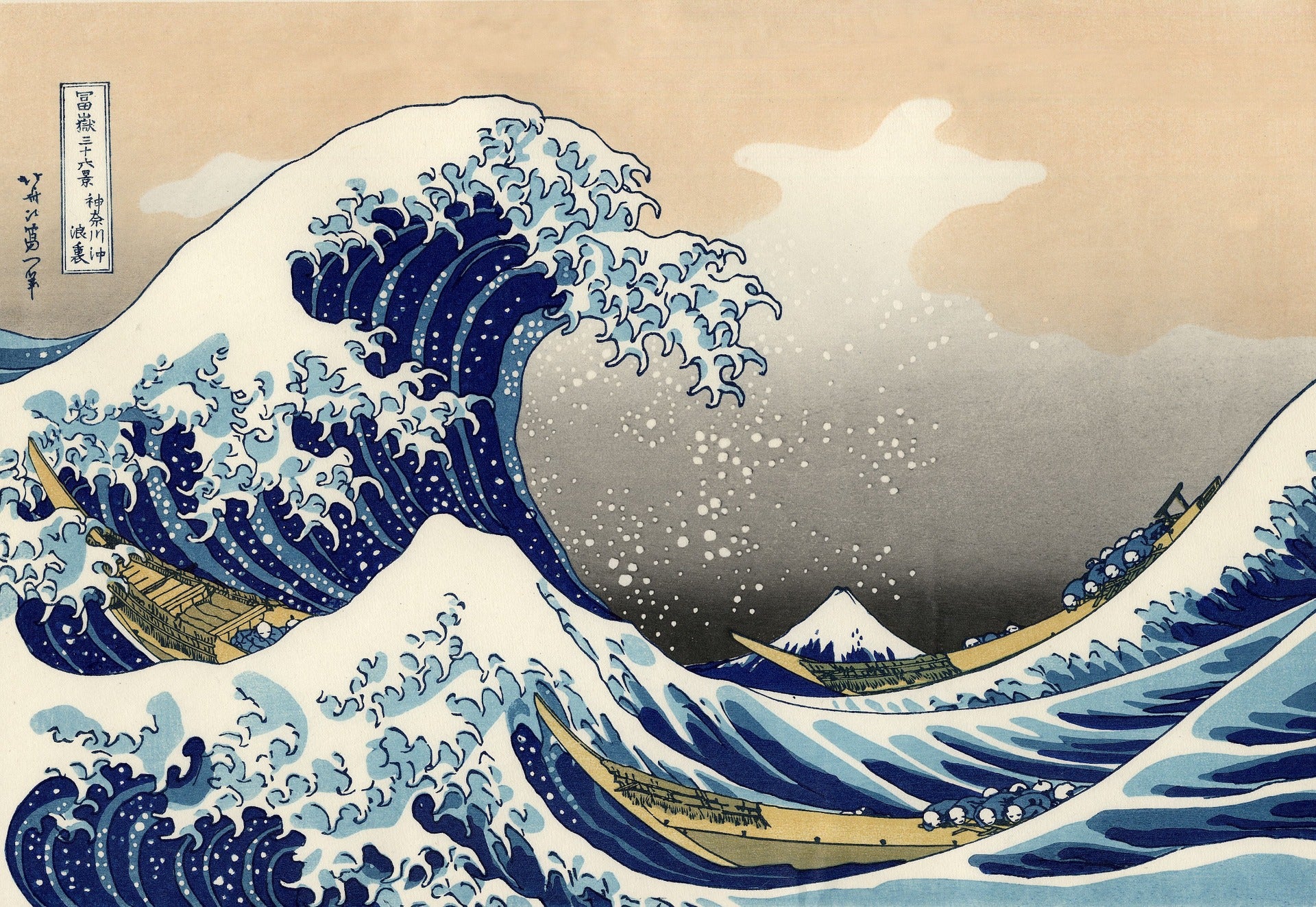
Under the Great Wave off Kanagawa
"The Great Wave off Kanawaga" , also known as "The Great Wave" , is one of the most famous examples of Japanese art in the world.
This painting is the best-known work of Japanese artist Hokusai Katsushika (1760–1849), one of Japan's greatest woodblock print artists, painters, and book illustrators. The Great Wave was created around 1831 as part of a series of woodblock prints titled Thirty-six Views of Mount Fuji (Fugaku Sanju-roku Kei) . All of the images in the series feature a glimpse of the mountain, but as you can see in this print, Mount Fuji doesn't always dominate the frame. Instead, here, the foreground is filled by a huge, crashing wave. This menacing wave is depicted moments before crashing into the three fishing boats on the water.

Why Mount Fuji? Mount Fuji is the highest mountain in Japan and has long been considered sacred. Hokusai is often described as having a personal fascination with the mountain, which sparked his interest in creating this series. However, this was also linked to the growing market for images featuring Mount Fuji. Japanese woodblock prints were often purchased as souvenirs. The initial audience for Hokusai's prints was ordinary city dwellers, followers of the "Fuji cult," who made pilgrimages to climb the mountain, or tourists visiting the new capital.
However, in the case of "The Great Wave," the most striking element of the painting is the expansive wave about to break, and its claw-like peak. The beautiful dark blue pigment used by Hokusai, called " Prussian blue ," was a new material at the time, imported from England via China. The wave is about to hit the boats as if it were an enormous monster, which seems to symbolize the irresistible force of nature and the weakness of human beings.

In the print, Hokusai conceived the wave and the distant Mount Fuji in terms of geometric language. Jocelyn Bouquillard, curator of the Bibliothèque Nationale de France, described the development of Hokusai's landscape prints, technical skills, and creative processes in Mount Fuji: The Complete Views in Color . The book provides several statements on how Japanese culture and historical events influenced Hokusai's creations as well as how he was perceived internationally by the Western art world. This informative book is an excellent guide for a thorough appreciation of Hokusai's art.
 Another engraving from Thirty-six Views of Mount Fuji , "The Storm Below the Summit"
Another engraving from Thirty-six Views of Mount Fuji , "The Storm Below the Summit"The small woodblock print, 39 cm x 26 cm, depicts two contrasting aspects of existence. The wave in the foreground and Mount Fuji in the background are symbols chosen not only to give perspective, a European-style technique he had adapted in a very inventive way, but also to represent the unpredictability of life . Mount Fuji , on the other hand, signifies stillness and eternity ; it is the symbol of Japan and, as an object of sacred worship, holds an important place in Japanese beliefs.
Edmond De Goncourt, the author of Hokusai (2009), explains how Hokusai's unique artistic expression influenced European artists since the mid-19th century. The prints began to circulate widely in Europe, and The Great Wave became a source of inspiration for various artists, including the Dutch post-Impressionist painter Vincent van Gogh and the French Impressionist composer Claude Debussy .
By the early 17th century, around 1639, Japan had isolated itself from the rest of the world, and all contact with Western culture was forbidden. Fortunately, today, this masterpiece, born in Japan's isolation, can be appreciated and admired in art exhibitions around the world. Copies of the print are housed in several Western institutions, including the Metropolitan Museum of Art in New York, the British Museum in London, the Art Institute of Chicago, and the Bibliothèque nationale de France.
Has this article inspired you? Discover our magnificent collection of Japanese posters ! You'll of course find Hokusai's iconic "The Great Wave."


